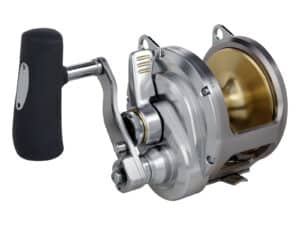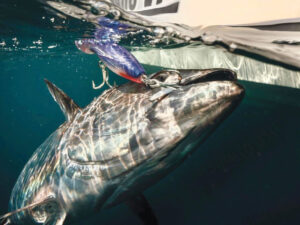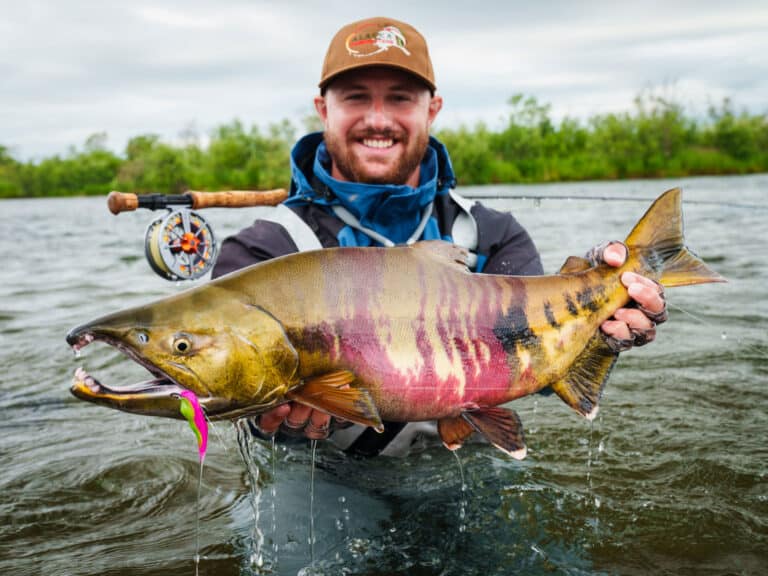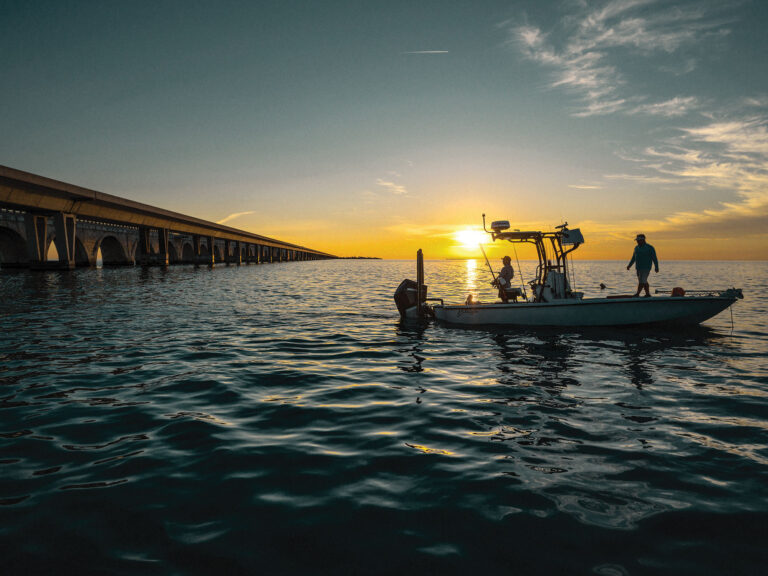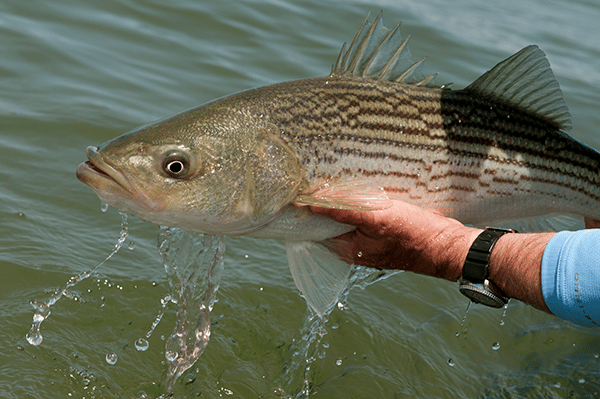
There are a number of techniques you can use when fishing for striped bass. Some of the more common tactics include fly fishing, trolling, night fishing, and sight fishing. Learning how to catch striped bass will largely depend on where you live, as some techniques perform much better in certain locations.
Seasonality and the time of day are perhaps the biggest factors to consider when targeting this increasingly popular game fish. Although striped bass will feed at any part of the day, the best times occur at dawn and dusk. And experienced anglers will say fishing at night can produce especially larger fish when you use the right bait.

Best Baits and Lures for Striped Bass
Figuring out how to catch striped bass often requires testing a variety of baits and lures. Where you’re fishing should be the biggest determining factor for the type of live bait chosen. Although stripers can be tempted by just about anything, the best baits for striped bass include bunker, herring, live eels, crabs, clams, and mullet.
While baits can create serious action, some of the most proven striper anglers prefer artificial lures over live bait, and each one has a favorite they lean on for a successful trip. The best lures for striped bass will depend on whether you’re fishing around structure or out in open water. Either way, it will take some time to determine your favorite.

Best Rigs for Striped Bass
One of the most consistently productive rigs for striped bass is a wooden dowel with a through-wire and a swivel at each end. Attach one end to the main line and the other to a piece of 20-pound-test mono and a small lure: a tiny jig tipped with a chartreuse or pink plastic grub tail, a small spoon or even a streamer fly. The dowel is primarily for casting weight, but the commotion it creates helps get the attention of stripers.
This rig adapts to specific conditions and locations by varying the length of the leader or trying different lures and flies, and you can use a floating wooden popper with its hooks removed in place of the dowel. The secret to avoiding tangles during the cast is to hang the lure or fly from a small nail or piece of wire installed on the dowel. When the rig lands, the lure will slip off the hanger and drop to the fish’s feeding zone.
Another one of the best rigs for striped bass is a 1- to 4-ounce torpedo-shaped drift sinker with a 3- to 4-foot leader to a hook and eel. The eel is dropped back 50 or more feet behind the drifting boat so that it approaches the rip at a low angle and tracks up and over the shoals at eye level to striped bass waiting in ambush.
A striped bass rig for live-lining bunker is as straightforward as it gets: a 4-foot leader of 20- to 40-pound fluorocarbon with a swivel on one end and a 4/0 to 6/0 thin-wire circle hook on the other. Bunker are relatively small, weak fish, and large hooks hinder their swimming. Insert the hook point through the fish’s nose, in one side and out through the other. This allows it to swim with its mouth open, and bunker will live far longer this way.
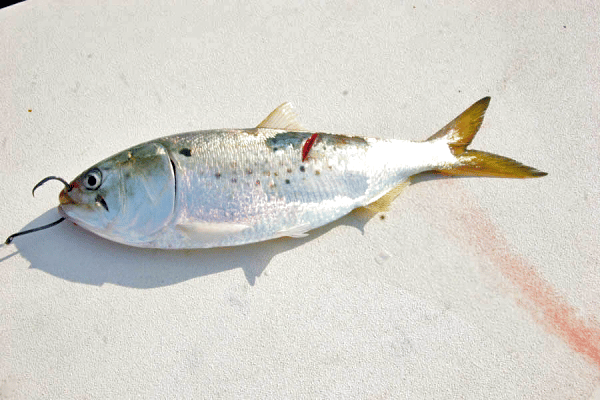
Fly-Fishing for Striped Bass
Fly-fishing for striped bass can be very exciting, and some anglers say flies imitating small baitfish out-produce other types of lures and baits. Streamers roll realistically in the water, but more importantly, their near-weightlessness allows them to be fished ultra-slowly. That’s important, because early-season stripers are often sluggish in the cold water and therefore less willing to chase after a fast-moving morsel. Also, fly gear allows the delivery of a small, lightweight lure, which is difficult to do with spinning or baitcasting gear.
Some prefer an intermediate or sink-tip line that can get the fly down to fish holding on the bottom in about five to ten feet of water. Fish flat, mud-bottomed areas during high tide, especially around mid-day or late afternoon after the sun has had a chance to warm the surrounding waters.
On outgoing tides, work drop-offs, points and bank edges where the fish line up and wait for food to be swept past. Top patterns at this time should be dark (black-and-olive) streamers in the 4- to 6-inch range, which match the backwater forage, but chartreuse and yellow flies also work. Clousers, deceivers and snake flies tied with lots of soft, flexible material are good choices too.
Trolling for Striped Bass
Many anglers will argue that trolling for striped bass is one of the most effective methods for landing fish. If you’re still learning how to catch striped bass, trolling is a good way to get your numbers up because it allows you to cover more water and locate big schools of fish. This technique also allows you to have multiple lines in the water at the same time, thus increasing your odds of catching striped bass even more.
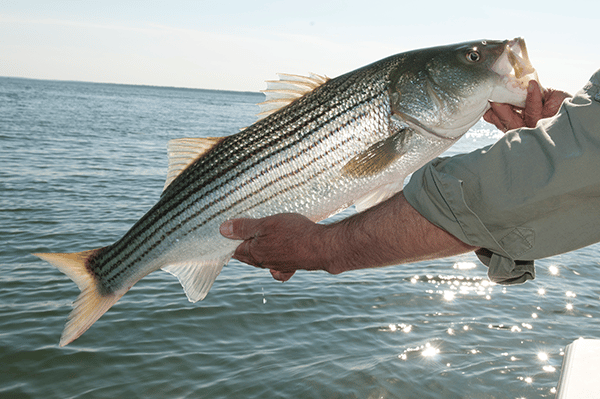
Night Fishing for Striped Bass
An often overlooked technique is night fishing for striped bass. It does require some additional gear such as a headlamp or flashlight, but the extra investment will go a long way in landing more fish. One of the biggest benefits of fishing for striped bass at night is that lights are great at attracting bait fish, and stripers can’t help but be drawn in as well. Although it may seem counter-intuitive, fishing dark lures will work best at night. Yes, you’re going to lose some sleep, but night fishing just might become your favorite method for how to catch striped bass.
Sight Fishing for Striped Bass
If you’re up for an entirely different challenge, but perhaps the most effective way for targeting fish, sight fishing for striped bass may be just for you. Sight fishing is a guaranteed adrenaline rush. There just isn’t anything else that compares to tossing a lure at a fish in sight and anticipating the bite. If fly-fishing is your preferred tactic, then you’re missing out if you haven’t given sight fishing a try.

